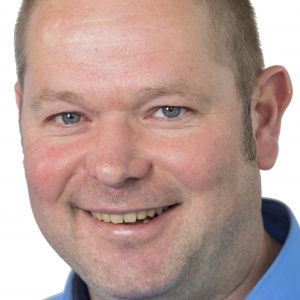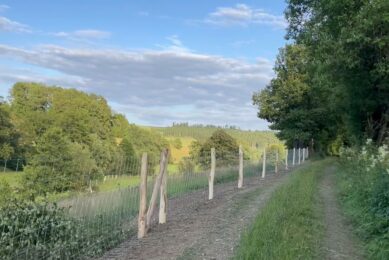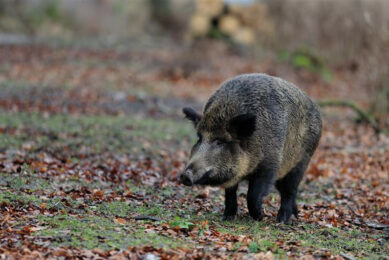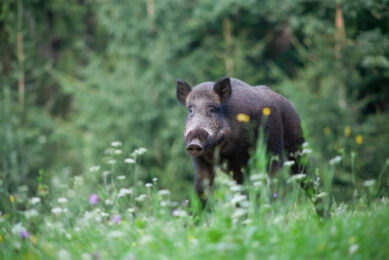Insemination in group housing – it works
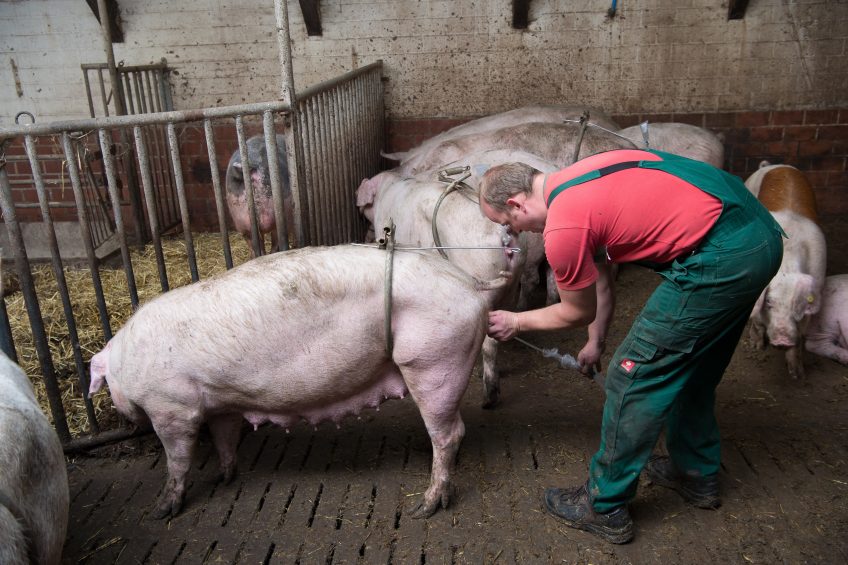
Pig producer Tim Kropp in Diepenau, Germany, chose to inseminate his sows without actually having them in sow stalls. For him, inseminating the sows in groups works well. The percentage of sows not-in-pig is about 5%.
Curious, the sows turn their heads towards the photographer. As soon as they have concluded that whatever is about to happen is not going to be overly spectacular, they continue with what they were doing before: rooting in straw, play with one of the balls or just find a good place to lie down.
Tim Kropp owns a closed regular farrow-to-finish business with 160 sows in Diepenau, Germany. He says, “Lactating sows, weaned pigs as well as finishers are all in conventional pig houses. Only the breeding gilts, as well as gestating sows and those waiting for insemination are kept on straw.”
Several years ago, he switched from being breeding farm to becoming a closed farm, including finishers. That said, his love for the breeding part never entirely vanished. He breeds all of his own animals, including the boars. In order to do so, he has a range of purebred animals on-farm: DanAvl Landrace, Large White, Duroc and Piétrain.

Insemination house
Special attention should go to the farm’s insemination house, as there sows and gilts go loose in one big group, sharing the same feeding station. The house has no stalls to lock them up; instead, it is equipped with a lying area with a closed floor and straw, as well as a slatted activity area, where the animals can eat and drink. The zones are connected by a passageway covered by plastic flaps. A special ingredient of the activity area is a pen for boars. A boar will only be there at insemination times.
A design which satisfies its owner. Despite the fact that the sows are about to get in heat, it’s clear the animals are at ease. Mr Kropp explains, “They know the housing system and the feeding system of both the breeding area as well as the gestating area.”
The breeding gilts will be added to the area for gestating gilts when they are about six months of age, and will be placed initially in a separate pen with straw. From there, they will be guided to the insemination room to get to know the feeding station and to socialise with the sows. As from eight months of age, they are inseminated in the same group as the sows.

Moment of insemination
The Pig Progress visit takes place during insemination. As soon as Mr Kropp enters the ‘insemination room’, the sows turn restless, since they know what is going to happen. Mr Kropp barely lets one of the two Piétrain boars into the boar pen when the sows line up in front of it. Some even jump on others, revealing the standing reflex. The presence of a photographer and a journalist makes the animals a bit more restless, Mr Kropp admits, but after a while all sows calm down.
Those sows in heat remain standing without a move in front of the boar pen. Only when the boar moves, they move along. At that moment, Mr Kropp marks those sows that need inseminating with a spray. Next, he plants an insemination device on the sows’ backs. The odd sow is still looking for an even better place to view the boar, but the remainder stands and can be inseminated quickly.
Profile
Name: Tim Kropp, age 34.
Location: Diepenau, Germany

The Kropp farm is a closed farrow-to-finish farm with 160 DanAvl sows, 25 beef cows, 120 ha of arable land and 10 ha of pasture.
On the fields, he grows corn and grains, which are used for the pigs; some corn is sold to third parties. He inseminates his sows while they are in a group. The number of sows not-in-pig is about 5%. He weans 31.5 piglets per sow per year. Mr Kropp does not introduce new pigs on his farm to prevent the introduction of new diseases. He has purebred Danish Landrace, Large White, Duroc and Piétrain pigs.
As soon as all semen has disappeared from the tube, Mr Kropp removes the pipette and places the insemination device at the next sow ready for insemination. In the meantime, sows which are not in heat yet, observe what he is doing. Mr Kropp does not mark those sows after insemination. He says, “I recognise all the sows, I know which ones have had their turn.”
That doesn’t only apply to the insemination room, by the way. Even in the room for gestating sows Mr Kropp knows the sow’s number from a distance. He says, “Especially the older sows I know without having to read the ear tag. I can tell which one it is by the shape of their body, their attitude, the legs, special shape of their ears or snout.”
As soon as the last sow has been inseminated, the boar is directed back into his own pen. The following day, a next boar will be used. Mr Kropp inseminates at set moments, Monday late afternoon, Tuesday early afternoon and Wednesday morning. All sows are inseminated using the standing reflex. On average, Mr Kropp inseminates each sow 2.5 times.

Boars
To keep the boars active, Mr Kropp allows them to perform their natural duties as well. He estimates that about 85% of the sows are inseminated artificially, and about 15% by the boars themselves. His results are successful – on average only 5% of the sows are found not-in-pig; he weans about 31.5 piglets per sow per year.
The current set-up of the mating room came into existence when the stalls in the room were ready for replacement. At that time, the sows were only in stalls when in heat. As the breeding gilts as well as the gestating sows are also kept in groups on straw, Mr Kropp decided to try his luck and and see if it would work in the insemination area. He says, “Prior to that, I had had no experience with inseminating in groups. I thought: if it doesn’t work out, I can always order stalls after all. Until now, I have been satisfied with this system.”


